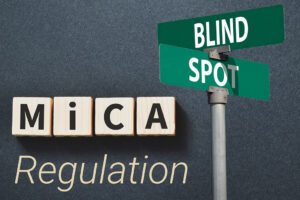UK lawmakers urge the government to consider reducing holding limits for the upcoming digital pound. They also emphasize ensuring its design allows the possibility of earning interest. These considerations reflect the focus on Digital Pound Holding Thresholds and how they impact financial dynamics.
Debates on Interest and Holding Limits for CBDCs
The UK and the European Union propose banning interest earnings on digital currencies. They aim to prevent digital currencies from functioning like bank deposits, which is a key aspect when evaluating the Digital Pound Holding Thresholds.
In a recent report, members of the Treasury Committee in the House of Commons, the lower chamber of the UK Parliament, shared their apprehensions regarding the country’s proposals for a central bank digital currency (CBDC) during a February consultation. The government indicates that it will likely need a digital pound in the future. Is a state-backed CBDC really necessary?
Countries worldwide are exploring CBDCs to enhance payment processes and integrate central banks into digital finance. Meanwhile, the US remains undecided about adopting a digital dollar. Europe, however, draws attention with the UK and European Union advancing CBDC plans. They focus on actualizing these currencies for private retail payments while considering Digital Pound Holding Thresholds.
Lawmakers in the EU have faced criticism for their plans to introduce a digital version of the euro. While British legislators support the EU’s suggestion of implementing a lower individual holding limit for the digital euro to prevent customers from leaving traditional banks, they disagree with the notion of treating central bank digital currencies like cash by not allowing them to earn interest. This highlights the importance of setting proper Digital Pound Holding Thresholds.
UK lawmakers recommend further analysis by the Bank of England and Treasury on the monetary policy implications of paying interest on the digital pound. They also advise ensuring that the digital pound’s design does not eliminate the possibility of earning interest, taking Digital Pound Holding Thresholds into account.
Next Steps for the Digital Pound Consultation
The UK Treasury outlines plans for a digital pound, emphasizing it won’t offer interest, similar to cash. These plans align with the approach of many standard current accounts. Its primary purpose is everyday transactions, not designed or intended for savings.
The lawmakers also put a caution on the proposed GBP 10,000-20,000 ($12.663- $25,320) holding limit and instead pushed for a lower limit close to the €3,000 cap presented by the EU’s European Central Bank. This is in an effort to reduce the risk of large-scale cash outflows from bank deposits to digital pounds but still with a view of amending over time.
Scepticism and Calls for Transparency in Digital Pound Development
Contemplating a degree of scepticism akin to that of EU lawmakers, the UK Treasury Committee report highlighted uncertainty regarding whether the advantages of a digital pound outweigh potential risks. The report warns against granting the government authority to collect user payment data beyond what law enforcement permits. It emphasizes that legislation on the digital pound must respect these limits.
Nevertheless, the report expressed support for the Bank of England and Treasury to engage in further consultative efforts on designing a digital pound. This approach ensures a smoother launch if the benefits grow and privacy and financial stability risks are addressed. They want the Bank of England to report expenditure on the digital pound as a separate item in its annual accounting reports from 2024 henceforth. The Committee asked the Bank of England and the UK government to stipulate details of the design and methods the digital pound will adopt upon issuance. Lawmakers require the Bank of England to fully cover the costs of issuing CBDCs. They also mandate tracking all associated expenses.
The UK Treasury is expected to release its response to the digital pound consultation soon. This response will outline the proposed model for the digital currency. Next, a phase focusing on experimentation and design will follow. A final decision on its issuance will be made after this phase.
Image Source: Adobe Stock
Disclaimer: This article is provided for informational purposes only. It is not offered or intended to be used as legal, tax, investment, financial, or other advice.












